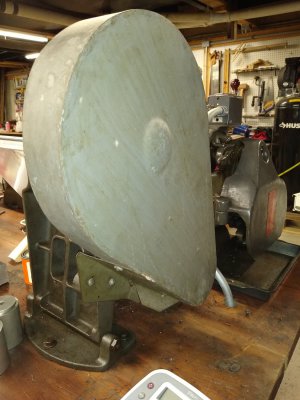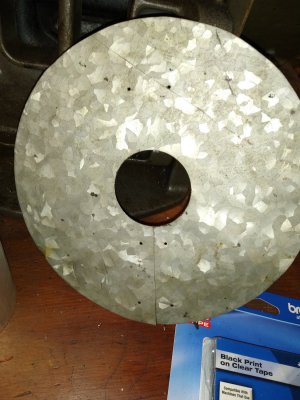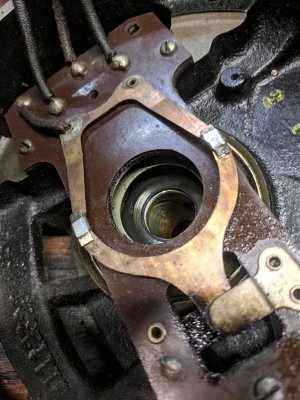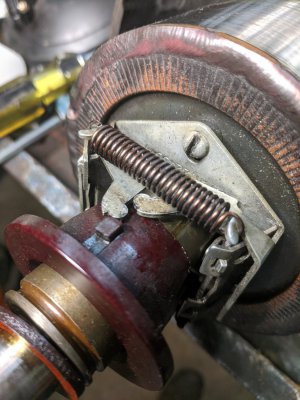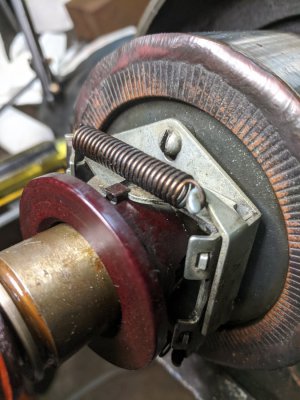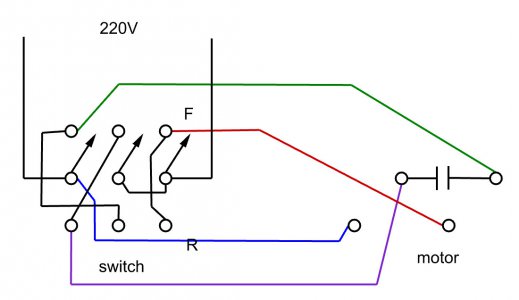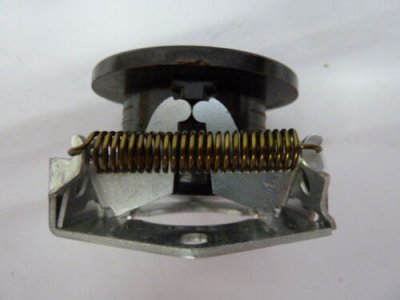I've got what I believe to be the original motor on my 9A, and it also has the horizontal oil hole issue... I ordered from eBay what I believe to be suitable 90 degree replacements, that visually appear identical to what's on the lathe. We'll see.... One day. But I believe that is the way to go. Taking apart an old motor is a gamble. Everything's fixable, but at the age of these things, it's usually best to let sleeping dogs lie. When the motor needs repair to function, that's the time for you to (or to have a motor shop) take the risk of opening it up, and move the end caps. If you want to go back to the original oilers. But I'd recommend the 90 degree ones for sure. I just can't see any sense putting all the planning and work into making a frankenstein machine over something that small.
I know you said it's rough, but check the motor tag(s) and check for a "washer" pinned under the oil cup that might have quantity and frequency of oiling. Mine is 30 drops of (20w?) annually. Others might be two or three drops daily (which means 8 hours of use, not calander days). That's good stuff to know. If it calls for motor oil, I'd pass. You'd be better served with the ISO hydraulic oil. If you happened to get a "South Bend Oil Kit", the type B would be ideal. The one South bends uses for gears. Motor oil today is nothing near what it was then. In short, it's got too much "extras" for something like that.
The motors that were shipped with these lathes (if the buyer so chose) were a quarter horse, or you could upgrade to a half horse. (and 1800 RPM, slightly lower nominal). Given the design of the spindle bearings in particular, the clearances allowed (they are tight, with good reason), you really don't want more than half a horse going through there anyhow. Higher horsepower and higher RPMs are quite possible for VERY SHORT times, but the hydrodynamic wedge (the oiling method) is, by necessity, not ideal. Perfectly sufficient, no worries, no issues, just not ideal. If that were redesigned (wouldn't really work for this lathe any more....), yeah, that size bearing could do a lot more. But that ship's sailed. I wouldn't try to upgrade beyond what you have. Besides all that, the lathe just doesn't want any more than that. Even with a half horse, you can flex things a lot that shouldn't flex as much as they will. Half horse is a good size.
No idea what those extra holes are in the countershaft bracket. The original owner of my lathe used them to mount a shop made belt guard. Clearly he didn't need those holes for anything either... Even had a finger guard for the other side of the countershaft pulley, but the copper wire ties started working loose, so I took it off. I might put it back one day.


